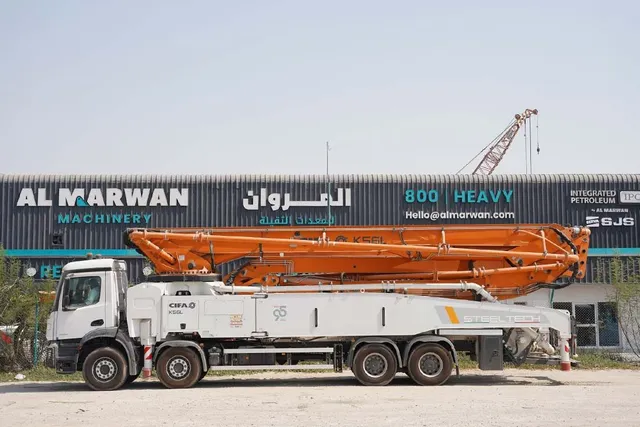How concrete pouring is executed in construction projects, from preparation to pumping, with the help of specialized concrete pumping machines.
How concrete pouring is executed in construction projects, from preparation to pumping, with the help of specialized concrete pumping machines.
Concrete pouring is a critical step in most construction projects, whether for foundations, roads, or towering structures. The process requires precision, expertise, and the right equipment to ensure the final structure is durable and reliable. In this article, we'll explore how concrete pouring is executed and the machines that make it possible.
Site Preparation and Formwork
Before the concrete pouring process begins, the site must be carefully prepared. This involves clearing debris, leveling the ground, and installing formwork. Formwork consists of temporary molds or structures that hold the concrete in place while it sets and hardens. The formwork's size and shape depend on the design of the structure, and it must be built strong enough to support the weight of the concrete.
Engineers also prepare the site by reinforcing it with rebar (reinforcing steel bars) to strengthen the concrete, particularly for large structures. Once these preparations are in place, the site is ready for the concrete pour.
Mixing the Concrete
The next step is to prepare the concrete mixture. Concrete is composed of cement, water, sand, and gravel. The proportions of these ingredients must be carefully calculated based on the project requirements. For large-scale construction projects, ready-mix concrete is often delivered to the site by trucks. This ensures that the concrete is mixed properly and consistently to meet the specific needs of the construction.
Transporting Concrete to the Site
Transporting concrete from the mixing plant or truck to the pour site requires special equipment, especially for larger projects. Concrete trucks transport the mixture, but additional machinery is needed to move the concrete into precise locations.
For high-rise structures or complex sites, concrete pump trucks are essential. The CIFA K56L Concrete Pump Truck is one such machine designed for long-reach applications. This pump truck efficiently delivers concrete to heights and distances that would otherwise be unreachable by manual labor.
Concrete Pumping
Once the concrete is delivered to the site, the pumping process begins. Pumping is the preferred method for delivering concrete to hard-to-reach areas, as it allows for a continuous flow of material with minimal waste. There are two main types of concrete pumps: boom pumps and line pumps.
Boom pumps use a robotic arm to deliver concrete with precision, making them ideal for large-scale or high-rise construction. The CIFA K42L Concrete Pump Truck is an example of a boom pump that can efficiently distribute concrete to multiple floors or across large areas. The flexibility of boom pumps allows workers to direct the concrete into precise locations, reducing the risk of voids or air pockets in the structure.
For smaller projects or tighter spaces, a line pump is more suitable. Line pumps transport concrete through hoses, which can be extended as needed. Machines like the CIFA K24L Concrete Pump offer excellent control in situations where boom pumps may not be practical, such as narrow spaces or residential sites.
Pouring the Concrete
Once the concrete reaches the site, it is poured into the prepared formwork. The goal is to pour the concrete evenly and consistently to prevent weak spots or air pockets from forming. Workers use various tools, including rakes, shovels, and vibrators, to help the concrete settle into all corners of the formwork.
Vibrating the concrete is particularly important as it ensures that any trapped air is released and that the concrete properly surrounds the rebar. This step significantly enhances the concrete's strength and durability.
For smaller or more delicate projects, a CIFA K20L Concrete Boom Pump Truck is ideal. This machine allows for precise pouring in situations where detailed control is required, such as small or intricate construction elements.
Curing the Concrete
After the concrete is poured, the curing process begins. Curing is essential for developing the concrete's full strength and involves keeping the concrete moist over a set period, typically seven days. This prevents the concrete from drying too quickly, which could cause cracking or weaken its overall structure.
Builders often use water sprays, wet coverings, or chemical curing compounds to maintain the moisture level. The curing process ensures that the concrete gains maximum strength, making it capable of supporting the weight and pressure required by the construction.
Concrete pouring is a carefully orchestrated process that involves site preparation, proper mixing, transportation, and precise placement of concrete. Machines play pivotal roles in ensuring that concrete is delivered efficiently and placed with precision. Through meticulous planning and execution, concrete structures are built to withstand time and the elements, providing the foundation for countless construction projects.




No comments:
Post a Comment